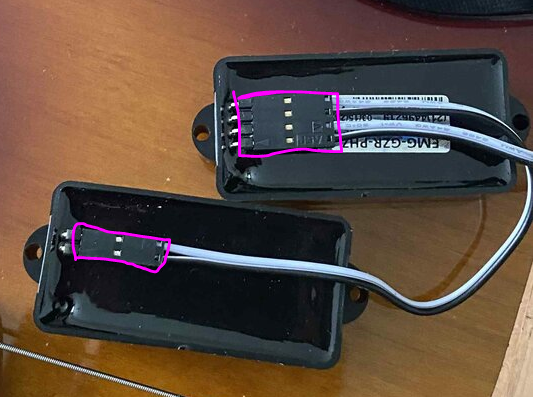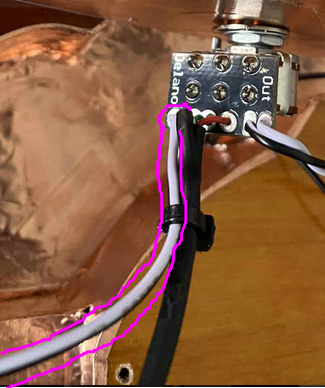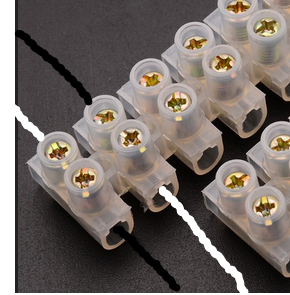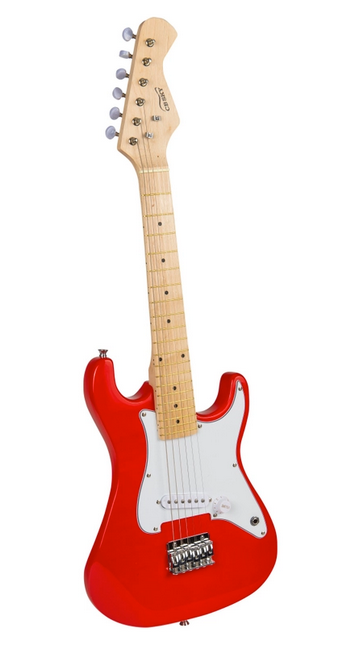-
Posts
549 -
Joined
-
Last visited
Content Type
Profiles
Forums
Events
Shop
Articles
Posts posted by MartinB
-
-
Result! Glad you got it sorted. Neither pickup is really to blame - if they're out of phase with each other, then it doesn't matter which one you reverse.
-
If you'd seen my efforts at soldering, you wouldn't be asking me for advice 😉
Removing the wires should be a case of pulling gently on them while applying the iron to the solder pad - as soon as the solder melts, they should come free. If they're not loose after a couple of seconds, remove the iron to avoid overheating, and re-think. You may need more power or a larger tip.
Remove one wire at a time if possible - you'll want to cut the cable tie bundling the P wires to the MM wires, and it may be easier if you can separate the black and white wires a few inches along their length.
https://mightyohm.com/blog/2011/04/soldering-is-easy-comic-book/
https://www.premierguitar.com/diy/guitar-bass-mods/guitar-soldering?page=1
Personally I'd go for the terminal block, as it's hard to get wrong - but best of luck either way!
-
First thing you could try is to flip both of these connectors upside down:

If that doesn't do it, flip them back to where they were when you started.
It looks like you really need to swap the black and white wires that go from the P pickup to the blend pot, but from your question I'm guessing that soldering is not an option?

One possible solution would be to cut those two wires and use a small terminal block to reconnect them the other way round - white to black, and black to white:

-
-
You want the centre line of the MM pickup to be in the region of 30 1/2" to 30 5/8" from the nut
-
 1
1
-
-
3 hours ago, Grahambythesea said:
Too many windings, 3 is enough.
☝️
Press each string down on either side of the nut as well, so that it doesn't curve like a banana over the top. Reduces your chance of weird chorus-y noises. Same thing at the saddles too.-
 4
4
-
 1
1
-
-
This thing's a real problem solver. GLWTS!
-
If he knew how to play, he wouldn't need to go to the school
-
 1
1
-
-
300 Hz here - there's a wide range around there that all sounds good, so I just went for the round number
-
-
On 02/10/2024 at 19:14, tayste_2000 said:
But if I don’t like it, it’ll be going in a drawer for 10 years ready to cash in on that scarcity 😂 (or more likely it’ll be on this forum end of October)
You were only a couple of weeks out 😄-
 1
1
-
-
On 13/09/2025 at 21:20, Mediocre Polymath said:
One thing that has thrown me a little is just how chunky the neck is – I'd taken measurements and so I knew in theory that it was a big boy, but I was still a little taken aback when I got it in my hands. It feels more like my dad's 70's EB3 than the jazz and stingray style necks on my custom basses.
Is it wide from edge to edge, or thick from front to back - or both 😬? I've been keeping an eye out for one of these basses, as it's of the few headless designs that doesn't look completely weird to me, but if it's anything like a full Precision-width nut then I will think again. -
6 hours ago, Obrienp said:
I need to find an oversized blank as the Satellite’s scratchplate is 48cm long! Any suggested sources?
Is that 48cm at the longest point, i.e. down the middle of the surfboard? A 43 x 29 blank like this would give you 51cm corner-to-corner.
-
 2
2
-
-
2 hours ago, Hellzero said:
with the serial place on the switch better positioned (to avoid huge differences in output).
You just mean moving the loudest (serial) position to one end of the switch, right? So that when flicking between settings, you don't have to go "across" the loudest one. -
The price of those adapters was already something of a joke. I use strips of veneer to reduce the hole size, same as @neepheid and Gerry Hayes.
These are worth considering as a Hipshot alternative:
-
How about some radioactive side dots?
https://www.reidtimber.co.uk/edc/luminous-tritium-side-dot-markers
-
 2
2
-
-
Another vote for TC Electronic Spark Booster - the budget king of this sort of thing
-
 3
3
-
-
Covers on a Precision look cool, and I never found that they got in the way - I just don't currently have a suitable bass to put them on. I can imagine the Jazz ones could be annoying due to the much larger footprint of the bridge cover though.
-
 1
1
-
-
In the bits box, screws attached with masking tape
-
Out of curiosity, I picked up a very cheap second-hand mini electric:

Which is one of these, minus the amp and accessories: https://www.smythstoys.com/uk/en-gb/toys/arts-crafts-and-music/musical-instruments-and-karaoke/musical-instruments/80cm-electric-guitar-with-amp/p/110724.
19 3/4" scale, which makes it somewhere around 80% sized. The bridge was not only off-centre, but also too way close to the neck - hopelessly out of tune with itself, and impossible to intonate. I feel sorry for any child that owned this before me, and for anyone who had to listen to them attempting to get a tune out of it!
So I moved the bridge position to the correct spot, and also shortened some of the intonation screws so that the saddles could be moved back far enough without the screws blocking the path of the strings. Put some 11-49 strings on to compensate for the short scale, and it tunes up and plays okay. It needs to be fretted with a light touch due to the low string tension; it's possible these things were intended to be tuned higher than E standard, although there's no mention of that on the product page. The nut is definitely a bit tall, but it's not glued in so that should be easy enough to fix when I get round to it.
The neck was unfinished and fairly rough, so that got a good sanding. The frets needed polishing, and although there were no protruding sharp ends, they were a bit blocky and needed a rub down.
Paintwork is fine. Tuners are slightly stiff but perfectly functional. The volume pot works. I fully expected the bridge to have no ground wire, but I was wrong. No shielding paint inside. The pickup was probably ok, but I swapped it for a cheap rail humbucker to head off any noise.I've played plenty of cheap Squiers and the like, and they've all been great - this thing is in another category altogether. The fact that there's a cut-out for the bridge in the scratchplate that is even further away from where it's supposed to be tells you something about the attention to detail. But attempting to rescue it was a fun, low-stakes project - and my nephew had a blast bashing away at it through a cranked amp! 😁
I wouldn't recommend buying one of these unless you can find one dirt cheap and you're prepared to work to make it playable. -
-
Spirit of Vintage now £44 (+ £10 postage) at Thomann
-
It it feels good, looks good, and makes you feel cool, then the Ibanez is the right bass for you 👍
-
 1
1
-
-
54 minutes ago, Ducky said:
Last weekend I happened to stumble into a high-end guitar shop and tried playing a fender bass with a fender amp, and it sounded incredible. I don’t think my playing has ever sounded so clean, which led me to realise that it wasn’t me / my technique that’s the issue.
Take your own bass to the shop and try it through the same Fender amp. If it still sounds bad, then you'll know that a new amp is not the solution.
-
 6
6
-



.thumb.jpg.52236fb3fc5f7192c6d4345d6b9bd2d8.jpg)









Bass neck weights...
in Repairs and Technical
Posted
I've got weights for four Squier necks without hardware - three of them Jazz-width, and one a five-string:
824g
827g
829g
868g
Surprisingly, the fiver is the second-lightest!
I'd hang fire on changing the bridge until you've got the neck and tuners fitted. Those paulownia bodies can be so light that you need a heavier bridge to counter neck dive.